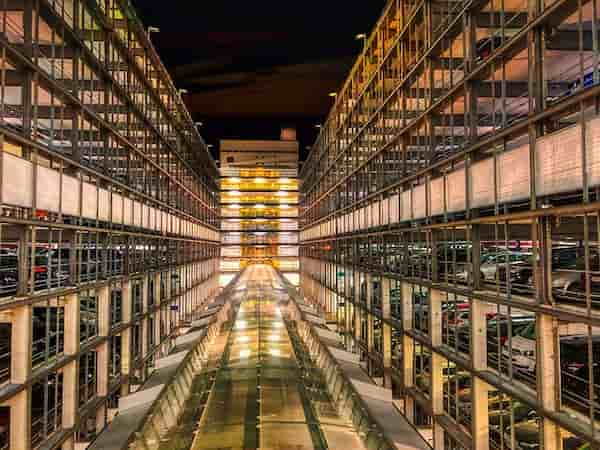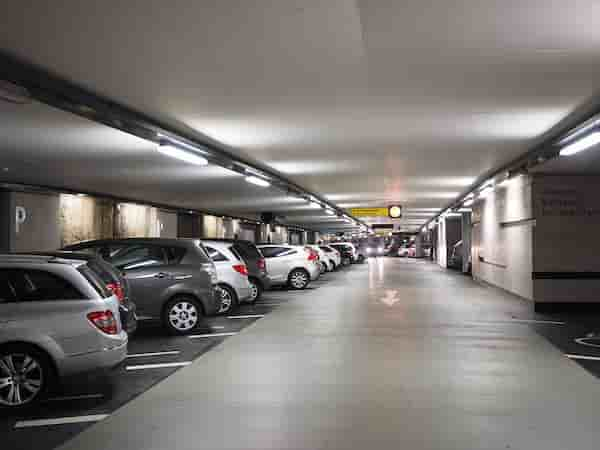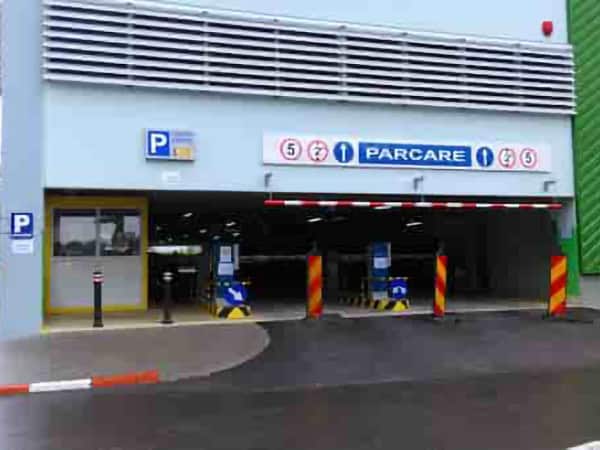Smart Parking - Innovative Technology Supporting the Challenging Issue of Urban Parking Spaces
In the current urban landscape, a genuine innovative force is emerging that reshapes the way time, fuel, and space resources are consumed – smart parking. In this era of digital transformation, where comfort and sustainability are paramount, smart parking stands as a spearhead of progress.
Smart parking does not mean, as most readers might think, just finding an available parking spot; smart parking is, in fact, a paradigm shift that optimizes every aspect of the pressing need for parking spaces in large cities. From sensors that detect free spaces to intuitive online applications that guide drivers to their destinations, the smart parking ecosystem promises a revolution in how we use vehicles in our cities. But beyond technological marvels, it is mainly about creating efficient, accessible urban spaces, reducing pollution, and even driver stress.
By reducing traffic congestion, lowering emissions, and improving urban mobility, intelligent parking systems play a crucial role in shaping modern urban landscapes. They redefine comfort, allowing users to reserve spots in advance, make parking payments quickly and online, and effortlessly benefit from an accessible parking service when they need it most.
In the following sections of the article, we will discover together what smart parking is, how these systems operate, explore their multiple roles, and illustrate their basic features, including those concerning security.
Contents:
- What does smart parking mean and how does this system work?
- The advantages and multiple roles of smart parking for drivers, municipalities, and residents of large cities
- Smart parking solutions and the security methods and means they offer
1. What Does Smart Parking Mean and how Does this System Work?
According to recent studies, in major urban centers, at least 25% of vehicles circulating on city streets are actually searching for a parking spot. It is an enormous figure that shows, in fact, that a significant number of vehicles are used inefficiently, leading, on one hand, to unnecessary consumption of resources (fuel, money, technical wear), and on the other hand, to traffic congestion, jams, wasted time, and a decrease in the overall quality of life and living standards within large metropolises.
The introduction of smart parking solutions based on the technologies behind these solutions is capable of solving these thorny issues illustrated above, providing a smoother urban traffic flow and saving money and time for traffic participants. Additionally, smart parking technology comes with another major advantage, namely, the reduction of greenhouse gas emissions and harmful gases emitted by internal combustion engines, as vehicles will no longer travel unnecessarily long distances searching for a free parking spot.
At the heart of the smart parking revolution is a sophisticated technological symphony that orchestrates the uninterrupted flow of vehicles in urban landscapes. These systems go beyond the basic level of traditional parking lots and garages, offering a dynamic and user-centered approach to parking.
The “nervous system” ensuring the functionality of smart parking systems are the sensor networks, the “discreet heroes” that gather real-time data about available parking spots. These sensors, often equipped with technologies such as ultrasound, infrared-based technologies, or computer vision, detect the occupancy level of parking spaces and transmit this information to a centralized system. These real-time collected data become the foundation on which the entire system operates.
The true beauty of intelligent parking systems lies in their ability to provide real-time guidance to drivers searching for parking spaces. Through intuitive smartphone applications or electronic signage, drivers are directed to available spots, significantly reducing the time spent circling in search of a free parking space. Additionally, some systems incorporate reservation capabilities, allowing users to book spots in advance. Thus, the overall smart parking system relies on elements such as ticketing and access control systems, which enable simple and quick payment (even without human intervention) for parking time and strict control of vehicle access to parking areas, automatic barrier parking systems that simplify access control or exit from parking areas, as well as other parking systems, and the already classic street parking meters, which are part of the landscape of most parking zones in major cities. All these elements are essential for a functional smart parking system.
Of course, the most advanced smart parking systems already use advanced technologies such as machine learning and AI algorithms to optimize their operations. These algorithms process historical traffic data, traffic participant behavior (especially the frequency of parking space occupancy in different areas and times) as well as urban traffic patterns to predict parking availability at different times of the day or week. This predictive capability enhances the accuracy of the system’s guidance and empowers vehicle drivers to make informed decisions regarding the route they will choose.
In tandem with these technological achievements, there are also concerns related to data privacy and security. Intelligent parking systems manage sensitive user data, including location information and payment details. Ensuring robust encryption of authentication protocols and compliance with data protection regulations is essential for fostering trust in these systems.


2. The Advantages and Multiple Roles of Smart Parking for Drivers, Municipalities, and Residents of Large Cities
Here is a selective list of some of the greatest advantages that the implementation of smart parking systems can bring to large urban centers:
- Considerable reduction in noise levels and pollution in city centers
In crowded metropolises, traffic congestion is a challenge and a daily familiar sight. However, smart parking systems offer a tangible solution to congested traffic. By efficiently guiding drivers to available parking spaces and minimizing the time spent searching for parking, these systems contribute to reducing traffic noise (engines, horns). This not only translates into time savings for drivers and vehicle passengers but also results in a consistent decrease in harmful emissions, thus promoting cleaner and more breathable city air.
- Enhanced comfort for traffic participants
The level of comfort offered by smart parking systems is akin to having a personal parking assistant. The ability to reserve parking spaces in advance, smoothly navigate to available spaces, and easily and quickly access ticketing and access control systems transforms the experience of traditional parking services. Additionally, these parking systems cater to a diverse audience, providing comfortable access to individuals with various disabilities, who can reliably benefit from specially designated accessible parking spaces. The convergence of technology and user-centered smart parking system design offers unparalleled comfort to city residents.
- Synergy with sustainability
The positive effects of intelligent parking systems extend beyond meeting drivers’ needs and penetrate the urban landscape itself. By optimizing the use of parking spaces, these systems help efficiently utilize urban public property. This optimization aligns with urban planning principles that prioritize sustainability and efficient land use. Thus, the perpetual need to create new parking spaces at the expense of green areas is reduced. As cities grow and develop, integrating smart parking technologies facilitates the creation of more parks and green spaces, environmentally friendly pedestrian traffic zones, and the creation of fast and efficient public transport systems.


3. Smart Parking Solutions and the Security Methods and Means They Offer
The integration of smart parking is not limited to technology; it is also about an overall change in urban society. Urban planners, architects, local decision-makers, and parking service beneficiaries alike have a role to play in shaping the cities of tomorrow. The success of these systems depends on collaboration, adaptability, and a shared vision of a more efficient, sustainable, and interconnected urban ecosystem.
Already, significant steps towards such a comprehensive smart parking system are being made through the implementation of modular and scalable parking systems that can be added to any type of existing or planned parking space across various application domains.
- Public and private parking
The field of public and private parking is the first beneficiary of the implementation of smart parking solutions. Existing public parking lots can be improved by integrating ticketing and access control systems as well as GPS guidance systems, which are especially useful for multi-level and large-area parking lots, systems that provide benefits through accurate tracking of available parking spaces and easy identification of free parking spots.
- Industrial buildings and logistics centers
The objectives in the range of industrial buildings and logistics centers are locations where the components of an intelligent parking system find useful implementation. Here, automatic barrier parking systems alongside automatic gates and docking systems are the ones that can simplify the internal traffic of freight transport vehicles in particular.
- Commercial and office buildings
Urban areas with commercial and office buildings are where vehicle parking is always an issue. Therefore, license plate recognition systems for employee vehicle parking, along with street blockers necessary to avoid road or carriageway blockages and street poles for guidance or restriction, represent just a part of the parking systems that can be integrated into the general urban smart parking.
- Residential areas
Urban areas with residential complexes also need adequate parking spaces for residents’ vehicles. Therefore, the implementation of private parking systems in such areas is an almost mandatory step from the design phase of residential complexes.
- Airports and train stations
Airport and train station locations are logistical hubs where there is an exceptionally high traffic of vehicles searching for a parking spot. In these locations, short-term or long-term parking is always necessary near departure and arrival terminals. The integration of ticketing and access control systems alongside automatic barrier parking systems is absolutely necessary in these areas, along with other advanced solutions of intelligent parking systems.
- Stadiums and other cultural event areas
The locations of stadiums and sports centers, as well as places hosting various public events, are places that can quickly become a real nightmare for drivers searching for parking spots. Here too, intelligent parking systems from the range of automatic barrier parking systems alongside judiciously placed street parking meters contribute to the efficient flow of vehicles and orderly occupation of parking spaces.
- Large medical centers and regional hospitals
Clinics and regional or university hospitals typically experience a significant influx of patients and visitors who often arrive in their own vehicles and need to find a parking spot. Thus, smart parking elements such as parking systems for the medical system play a special role in providing extra comfort for patients, visitors, and medical staff.
Regarding the security component that smart parking systems offer, it has several dimensions.
- Automatic barriers play a dual role. They regulate the flow of vehicles, ensuring orderly entry and exit, and act as a deterrent against unauthorized access. The barriers are the “sentinels” that uphold the integrity of the parking environment, ensuring that only authorized persons interact with the system.
- Surveillance systems. The security of intelligent parking systems extends beyond physical barriers, encompassing a vast domain of digital vigilance. Advanced surveillance systems equipped with cameras and sensors monitor the entire parking area, acting as true guardians against potential threats. Artificial intelligence and machine learning algorithms lend their expertise, instantly identifying unusual patterns or behaviors and alerting security personnel.
Thus, with this convergence of technology and human ingenuity, the cities of the future await their transformation. The journey towards a smarter, more comfortable, and sustainable urban future begins with a single step – one that fully embraces the power and advantages of smart parking systems.